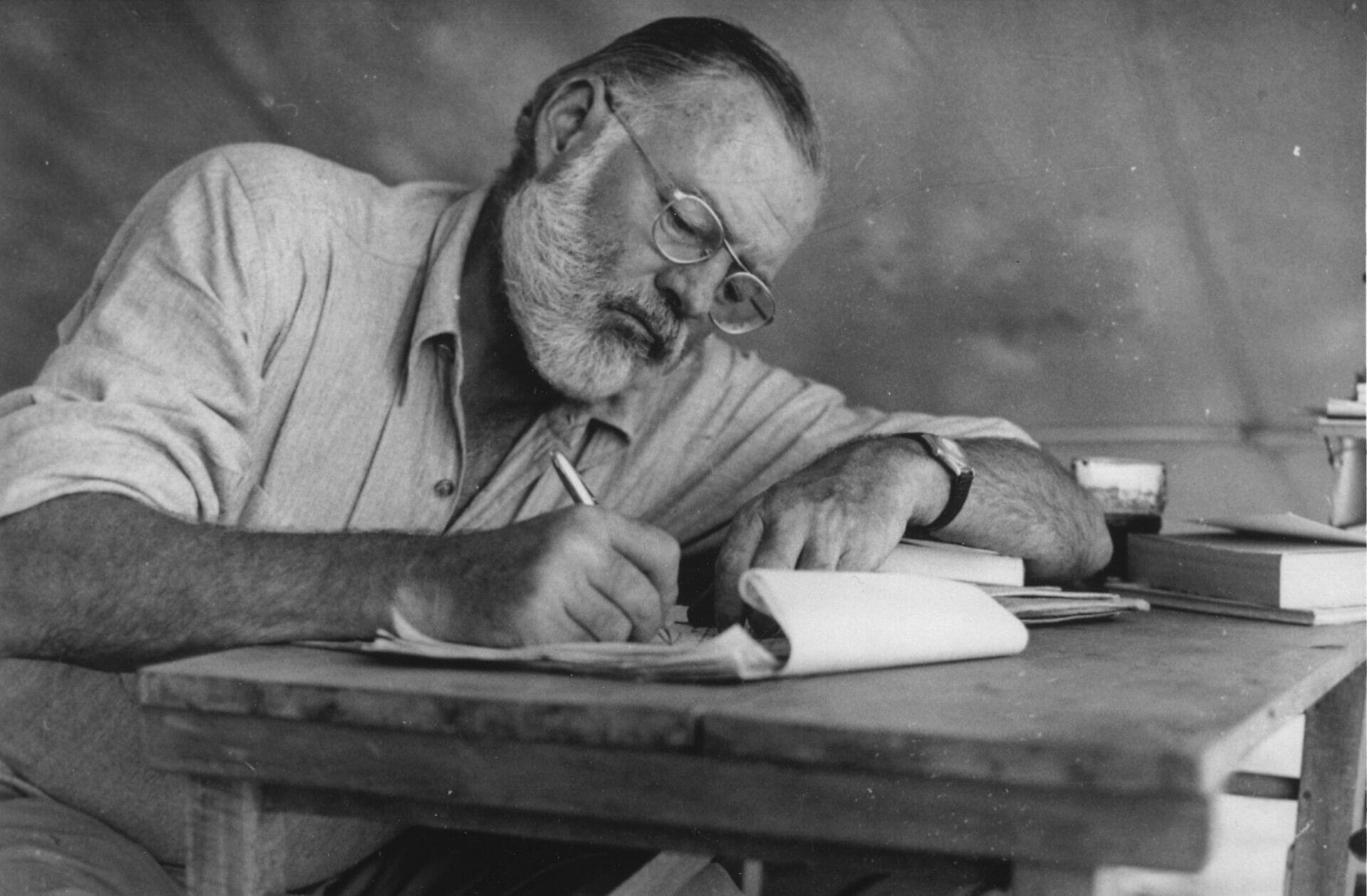
A Farewell to Arms | A faithful testimony of wartime
Author
Format
Length
Written by American writer Ernest Hemingway, A Farewell to Arms is one of the most important and relevant pieces of fiction about war written in the 20th century. This semi-autobiographical work focuses on the adventure of an American lieutenant who served in Italy during World War I. First published serially in the United States in Scribner’s Magazine between May and October 1929, the novel sold many copies obtaining both consensus and disagreement. Hemingway’s language, considered too explicit for the time, was particularly criticized, especially for the description of the relationship between the two unmarried protagonists. Later in the same year, A Farewell to Arms was published in the form of a novel and soon became a bestseller.
A problematic publication in Italy
Over the years Hemingway’s book has been translated into various languages, but its publication in Italy has a particular history. The Italian fascist government banned it for a long time for political and military reasons. Firstly, Hemingway did not hesitate to describe the incompetence of the Italian army and episodes of cowardice. Moreover, the novel recounts the disastrous Italian defeat of Caporetto (October 1917). The Austrians defeated the Italian army, resulting in many soldiers’ brutal death while others deserted. Lastly, between Hemingway and Benito Mussolini, founder and leader of the fascist party, there was not a good relationship. In an article published in 1923, Hemingway described him as “the biggest bluff in Europe”. That is why A Farewell to Arms was published in Italy only nineteen years later, in 1948, after Mussolini’s death (1945).
A novel between reality and fiction
A Farewell to Arms tells the story of Lieutenant Frederick Henry, an American who volunteered in the Red Cross to join WWI. The young boy serves as an ambulance driver in northern Italy. One day, one of his friends introduces him to a British nurse, named Catherine Barkley. In a short time, the two fall in love and start a clandestine relationship. Shortly after, Lieutenant Henry goes to the front where he gets hurt. Transported to a hospital in Milan, he finds Catherine who takes care of him during his convalescence. After he is completed healed, he has to return to service, but unexpected events will lead him to make difficult decisions just as the Battle of Caporetto looms.
In A Farewell to Arms, there are clear similarities between what Hemingway experienced in the war and what he wrote in the novel. In particular, the author enlists as a driver of an American Red Cross ambulance just like his fictional protagonist. He was also seriously injured during his military service. But there are some important differences too. First of all, Hemingway arrived in Italy in 1918, while his character is in 1917. This temporal change allowed the writer to include the battle of Caporetto in the narration. In war, Hemingway fell in love with an American nurse, Agnes von Kurowsky, but their love story was not as intense as the one described in the book.
Love and duty
A Farewell to Arms has a particular title that suggests a double entendre. In fact, the term ‘arms’ can be interpreted both as parts of the human body or as weapons. This semantic ambivalence is linked to the two main themes of the novel: love and war. Thus, the main character may have to say goodbye to both the woman he loves and the army. Hemingway explores themes such as the precariousness of life and love, the sense of duty and the desires of the heart. The novel remains imprinted in the mind of readers for the tragic love story, but above all for the pages dedicated to the ruthlessness of war.
War is a recurrent theme in Hemingway’s work. The author paid particular attention to the post-war generation, defined as Lost Generation. The term was spread by Hemingway through his novel The Sun Also Rises (1926), but coined by Gertrude Stein. It refers to the condition of disillusionment and loss of value experienced by those who lived during WWI. In literature, it indicates a specific group of authors that includes Hemingway and Stein, as well as Francis Scott Fitzgerald, Edward Estlin Cummings, and Thomas Stearns Eliot.
Stylistic choices
In A Farewell to Arms Hemingway uses simple and immediate language. He does not enrich the text with adverbs and adjectives but prefers declarative sentences. The text proceeds without pauses, with many repetitions and a unique use of the conjunction ‘and‘. As Hemingway said,
In the first paragraphs of Farewell, I used the word ’and’ consciously over and over the way Mr. Johann Sebastian Bach used a note in music when he was emitting counterpoint.
The narration is vivid thanks to its rhythm and sensory details. Furthermore, the novel presents a peculiar weather symbolism. Rain becomes a symbol of death, defeat and suffering, while snow and ice indicate hope and safety.
Critics often refer to Hemingway’s style as plain and journalistic. As a matter of fact, he was not only a writer but also a journalist and war correspondent. Before leaving for WWI he had started his career for The Kansas City Star. After the war, he moved to France as a foreign correspondent for the Toronto Star. Later he worked as a reporter during the Spanish Civil War, an experience that inspired the novel For Whom the Bell Tolls (1940). With the short story The Old Man and the Sea (1952), he was awarded the Nobel Prize for Literature in 1954.
Tag
Buy a ☕ for Hypercritic









